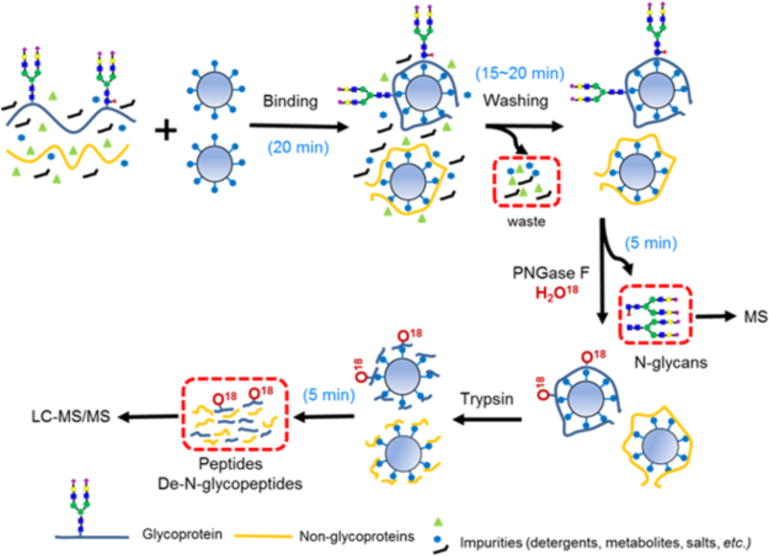FIG. 1.

The SRS workflow separates and captures purified free N-glycans and tryptic peptides for downstream mass spectrometry (MS) analyses. SRS has high binding capacity with all biological samples, including membrane-enriched proteins solubilized in 2% SDS. Non-protein compounds such as metabolites, reagents, salts, and detergents are rapidly removed in minutes. In this workflow, samples undergo sequential enzymatic de-N-glycosylation to release and capture N-glycans, followed by proteolytic digestion to recover peptides. H2O18 is used to label the original sites of N-glycosylation. The handling times are reported, excluding the time for enzymatic reactions.
